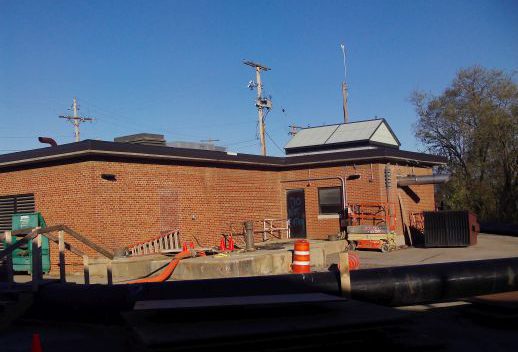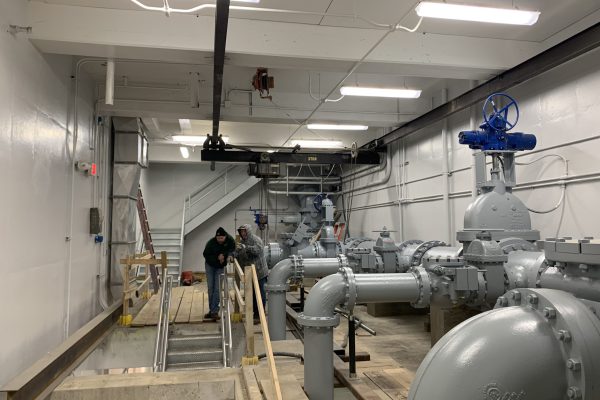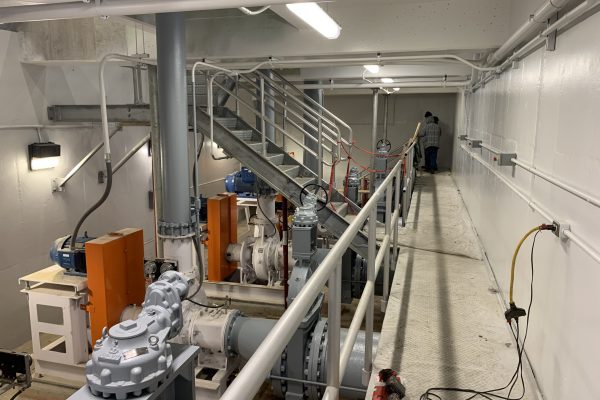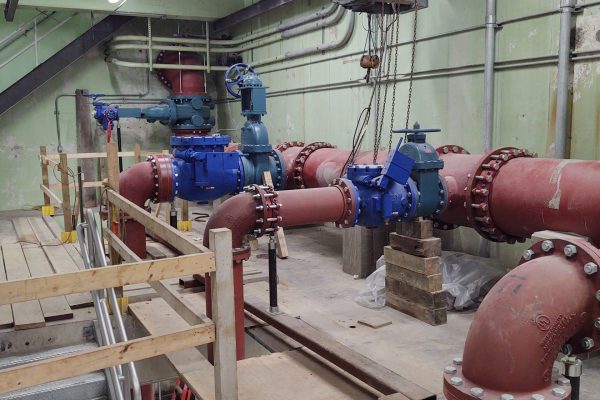While working on capital improvements at the Wastewater Treatment Plant, the City determined it was necessary to address concerns at the Park Avenue Pump Station (PAPS). The PAPS receives flow from the 60-inch interceptor which is collecting sanitary flow from approximately half of the City’s service area. The flow from the City of Ontario also goes into the PAPS. The pump station has a firm pumping capacity of 25 mgd, which is nearly equal to the WWTP sustained flow rate of 20 mgd. The PAPS service area and capacity make it an integral part of the City’s collection and treatment system. Although I/I in the system is a high priority, the PAPS’ condition had become critical due to excessive maintenance and diminished reliability. Jones & Henry performed a preliminary design with an emphasis on a phased approach to the improvements. The phased approach examined the critical infrastructure and included long-range goals that coincide with the Director’s Final Findings and Orders (DFFO) for addressing the I/I.
The preliminary design included a hydraulic evaluation to determine the volume of flow that is conveyed to the pump station and the capacity of the station infrastructure, both current and future assuming new pumping equipment is installed. We determined a current pumping rate and the future capacity of the pump station. From the evaluation we determined the replacement pump sizing and arrangement. The existing piping condition was evaluated including metal thickness testing and structural analysis to determine useful life. Wet well condition and influent screening condition were reviewed for needed improvements, the existing valves conditions were reviewed to determine service life and need for replacement. The electrical system was evaluated including utility service, MCC, Standby Generator, as well as review of the instrumentation & control system.
The Jones & Henry team recommended a phased approach to the needed improvements, with the first phase being the most critical needs for improving operational reliability. This included replacement of the influent screen, minor structural repairs to the wet well and adjacent area. Four new Gorman-Rupp end suction wastewater pumps (two rated at 6.5 mgd and 2 rated at 18.4 mgd) were planned in the existing drywell. In addition, we designed replacement of all the piping, valves and appurtenances inside the dry well. In addition to the pumping improvements, the replacement of the electrical and control system was essential to the new equipment and operation of the station. The planned improvements will require significant structural modifications to the drywell for the new equipment, shoring the structure and permit access. Also included in the first phase of the improvements were improvements to the HVAC, electrical, SCADA and Telemetry at the wastewater treatment plant. In order to maintain operation during the construction a by-pass pumping plan was developed to minimize the downtime, minimize the duration of by-pass pumping and control project cost.
The PAPS has a firm pumping capacity of 25 mgd and future capacity of 50 mgd.





